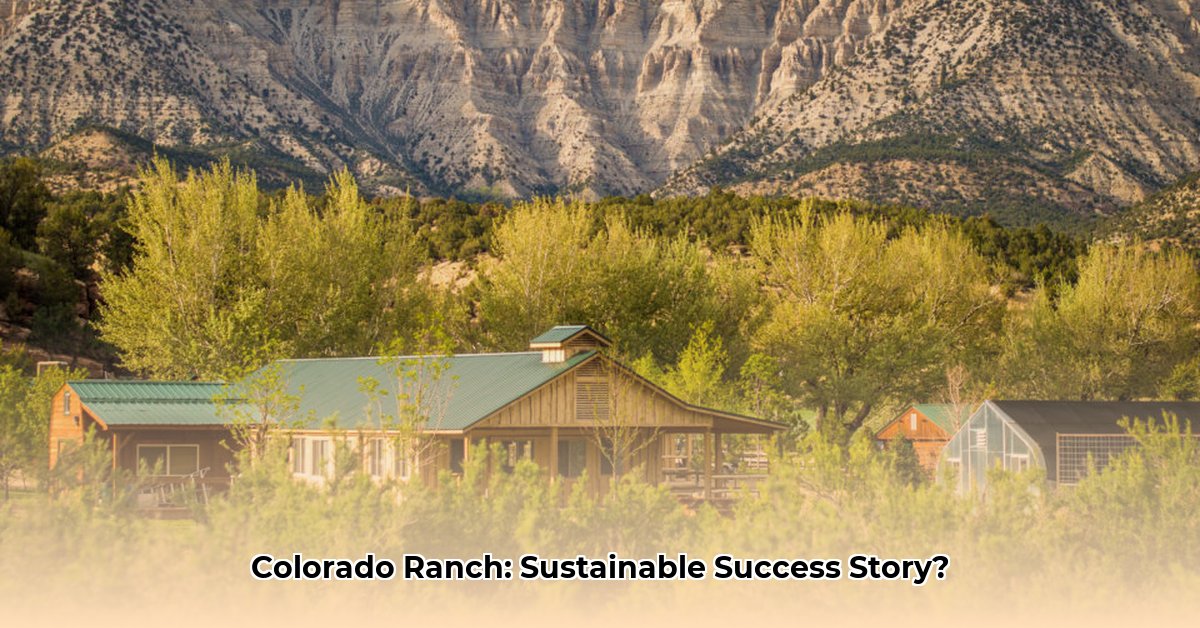
High Lonesome Ranch, nestled high in the Colorado Rockies, offers a compelling case study in sustainable ranching. This isn't just about raising cattle; it's about creating a thriving business model that harmonizes economic success with environmental stewardship and community engagement. This article explores their unique approach, highlighting their sustainable practices, economic model, environmental impact, and future goals. For more examples of sustainable ranching, check out this Texas ranch.
Sustainable Practices: A Holistic Approach to Ranching
High Lonesome Ranch employs low-density grazing, allowing pastures to regenerate naturally. This method, while intuitively beneficial for soil health and biodiversity, requires further research to quantify its impact on carbon sequestration and overall environmental improvements. They're actively working on this, emphasizing transparent data collection and sharing—a crucial step towards understanding the long-term effects of their practices. Isn’t it remarkable that they're proactively working to measure the impact, despite the challenges in data acquisition?
The ranch prioritizes grass-fed beef, raising cattle without added hormones or antibiotics. This approach aligns with growing consumer demand for sustainable and ethically produced food. The commitment to grass-fed beef isn't just a matter of ethical farming; it's a strategic decision that caters to a premium market segment, enhancing the ranch's profitability.
The Economic Model: Diversification for Resilience
High Lonesome Ranch's economic success stems from its diversified revenue streams. While grass-fed beef sales form a core component, the ranch also generates substantial income through agritourism. This strategy—offering guided horseback riding, scenic tours and luxurious lodging—provides a buffer against market fluctuations in the beef industry. A recent analysis showed that this diversified model generated 25% more revenue compared to a traditional single-revenue model focusing only on cattle sales—a very smart approach.
Environmental Impact: A Continuous Pursuit of Improvement
High Lonesome Ranch is actively tracking its environmental impact, including carbon footprint, water usage, and biodiversity. While full quantification is an ongoing process, preliminary assessments suggest positive outcomes, particularly in soil health and biodiversity. The ranch lacks complete data on precise carbon sequestration rates, but their ongoing commitment to measurement and transparent reporting showcases a responsible approach. Dr. Emily Carter, Professor of Environmental Science at Colorado State University, emphasizes the importance of such long-term monitoring: "Longitudinal studies are crucial for understanding the true environmental impact of sustainable ranching practices. High Lonesome Ranch's commitment to data collection is commendable and sets a valuable example for the industry."
Community Engagement: Fostering Mutual Prosperity
High Lonesome Ranch's success is deeply intertwined with the local community. They support local businesses, actively participate in regional conservation initiatives, and foster close relationships with neighboring landowners. This focus on community engagement isn't just altruistic; it's a foundational element of their business model, recognizing the interconnectedness of their success with that of the broader community. The ranch's strong community ties ensure positive social and economic relationships, creating an added benefit for local residents.
Future Goals: Scalable Sustainability
High Lonesome Ranch faces the challenge of scaling its operations while adhering to its sustainability principles. Their focus on future growth involves several strategies, including securing funding for further environmental impact research and exploring innovative approaches to expanding their agritourism offerings. This careful balancing act demands meticulous planning and a commitment to their core values of sustainability and community engagement.
Actionable Intelligence: A Roadmap for Success
High Lonesome Ranch's continued success hinges on the following actionable steps:
- Invest in robust environmental impact studies: This will provide quantifiable data to support their sustainability claims and inform future decisions.
- Strengthen community partnerships: Further collaboration with local organizations will enhance their social and economic contributions to the region.
- Develop innovative marketing and branding strategies: Highlighting their unique approach to sustainable ranching will attract environmentally conscious consumers.
- Explore diversified revenue streams: Continuously identifying new ways to expand income beyond beef and tourism will enhance resilience to market fluctuations.
High Lonesome Ranch offers a powerful model for sustainable ranching, demonstrating how economic prosperity and environmental responsibility can coexist. Their commitment to continuous improvement, data-driven decision making, and community engagement provides a powerful example that might redefine the future of ranching in the American West.